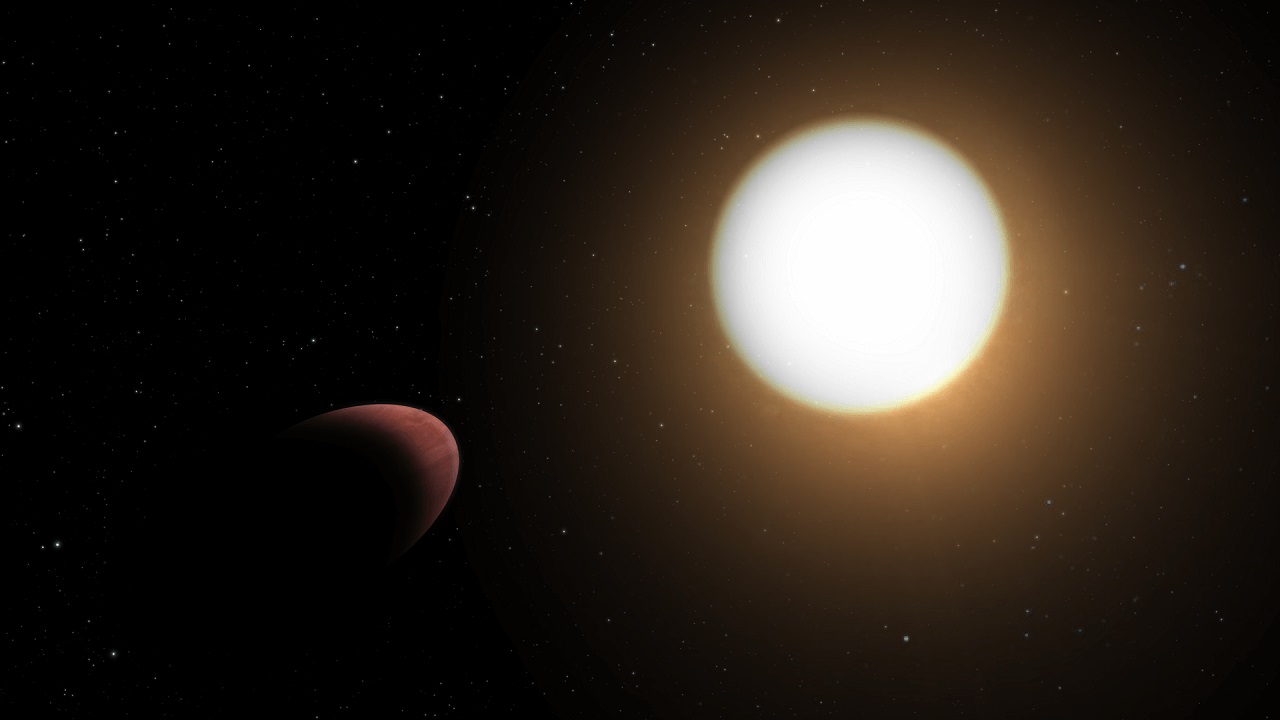Jupiter-sized planet has comet-like tail 560,000 km long
The gas giant exoplanet WASP-69b has repeatedly attracted the attention of astronomers; This time because of the trail of gas it leaves behind along the way—a tail seven times the radius of the planet.
This tail is formed by the cooling of WASP-69b 's atmosphere, making it a fascinating celestial body to study. The planet is about the size of Jupiter and is located 160 light years away; It orbits its star at an unusually close distance.
According to a team of researchers at the University of California, Los Angeles, this proximity is the reason for its elongated tail. Radiation from the stellar wind hits WASP-69b, scatters it, and directs it in a tail.
"Previous studies by other groups had shown that this planet was losing some of its atmosphere and therefore should have a small tail. "However, we have now confirmed this tail and shown that it is at least seven times longer than the planet itself," says astrophysicist Dakota Tyler.
New information was obtained as a result of observations with the 10-meter telescope of the Keck Observatory in Hawaii . Its high-resolution spectrograph accurately described changes in the planet's light and frequency.
Based on this data, the team determined that WASP-69b is losing large amounts of hydrogen and helium; Their interaction with stellar winds was also studied in detail.

The data collected on WASP-69b provided astronomers with invaluable information about the interaction between the planet and the star; Moreover, this phenomenon was observed in a decisive, early phase.
"We thought that for most of the exoplanets known to us, the period of losing their atmosphere ended a long time ago. "WASP-69b is a real treasure because we have a rare chance to study atmospheric mass loss in real time and understand the critical physics that shapes thousands of other planets," says astrophysicist Eric Pettigura.
WASP-69b was discovered a decade ago, but as this latest study shows, there's still a lot we don't know about it. Belongs to E. year Hot Jupiter -type planets. It orbits its star so closely that one orbit takes less than four Earth days.
Despite the massive tail, there is no chance of an exoplanet escaping its system yet. The planet is so gigantic that its star itself will disappear long before its atmosphere is completely dispersed into space.
"WASP-69b is about 90 times more massive than Earth and has such a large reservoir of material that even if it loses such a huge amount of mass, it won't lose much of its life. "There is no chance that this planet will lose its atmosphere completely during the lifetime of the star," says Tyler.
The study was published in The Astrophysical Journal .
Prepared by newsroom.ucla.edu and ScienceAlert.



